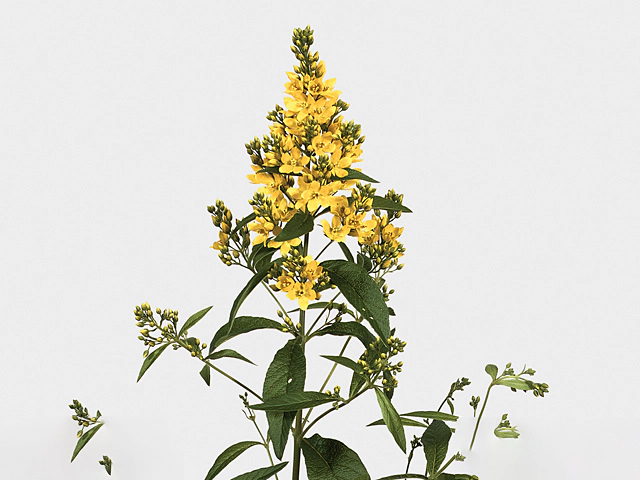Lysimachia vulgaris

| Leaf margin | Erose |
| Leaf type | Foliage leaf |
| Winter hardness | Good (USDA-zone 5, 6) |
| Flower color | Yellow-medium yellow-012A |
| Inflorescence | Torch |
| Light conditions | Sunny; Semi-shades |
| Leaf division | Simple |
| Plant, growth type | Erect |
| Leaf colour, pattern | Bicolored |
| Toxicity (if consumed) | Not or barely |
| Moisture requirements | Moist; Wet; Swamp |
Lysimachia vulgaris, commonly known as Loosestrife or Yellow Loosestrife, is a perennial plant with attractive features that make it a popular choice among gardeners. It is native to Europe, Asia, and North America and is especially tolerant of wet or swampy conditions.
One notable characteristic of Lysimachia vulgaris is its beautiful yellow flowers. The flowers, which bloom in a torch-like inflorescence, display a medium-yellow hue that adds a vibrant touch to any garden. The plant thrives in sunny or semi-shaded areas, making it versatile in various light conditions.
The foliage of Lysimachia vulgaris is equally appealing. The leaves are erose in shape, giving them a wavy appearance along the edges. With a simple leaf division, the plant's green foliage creates a lush and vibrant backdrop for the yellow flowers. The leaves themselves have a bicolored pattern, adding visual interest to the plant even when it is not in bloom.
In terms of growth, Lysimachia vulgaris has an erect growth type, meaning it stands upright without leaning or trailing. This growth habit makes it suitable for creating structural elements within a garden or as a stand-alone focal point. Additionally, the plant is winter-hardy, able to withstand USDA zones 5 and 6, which makes it ideal for those living in colder climates.
One notable aspect of Lysimachia vulgaris is its ability to thrive in moist to wet conditions. It is often found in swamps or along the banks of rivers and streams. The plant's resilience to wet soil makes it an excellent choice for rain gardens or areas of the garden that are prone to flooding.
While many plants have toxic properties if consumed, Lysimachia vulgaris is either non-toxic or only mildly toxic. This is good news for households with children or pets, as it reduces the risk of accidental ingestion causing harm.
Whether you have a moist garden or want to add a splash of yellow to your landscape, Lysimachia vulgaris is an ideal choice. With its vibrant yellow flowers, attractive foliage, and adaptability to various light conditions, it is sure to bring beauty and charm to any garden space. Its low toxicity and ability to thrive in wet environments also make it a practical and environmentally friendly option for gardeners. Consider adding Lysimachia vulgaris to your garden to enjoy its visual appeal and easy maintenance.
Market availability index by month:
| Jan. | Feb. | Mar. | Apr. | May | Jun. | Jul. | Aug. | Sep. | Oct. | Nov. | Dec. |
|---|---|---|---|---|---|---|---|---|---|---|---|
| - | - | - | - | - | 2 | 4 | 3 | 1 | - | - | - |